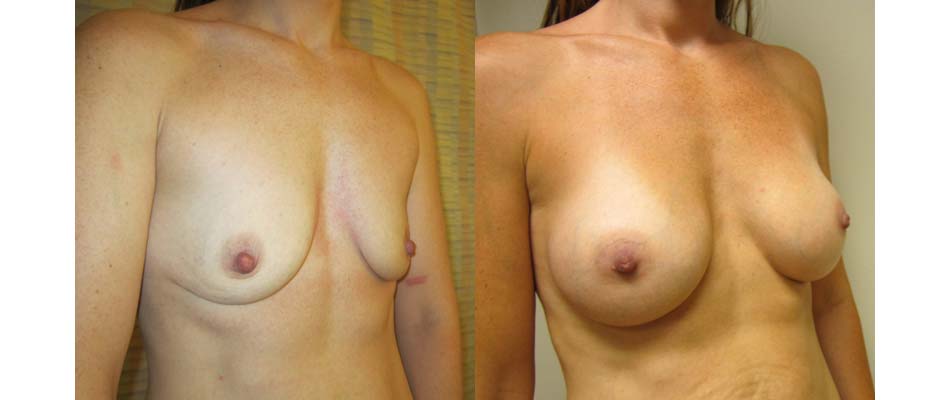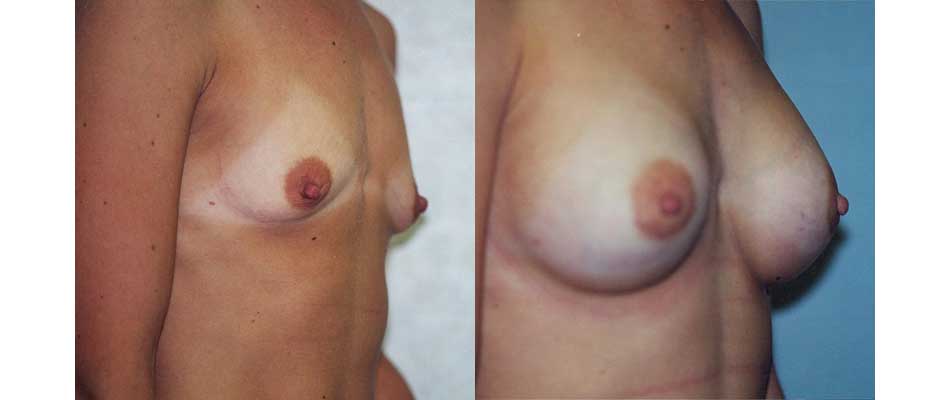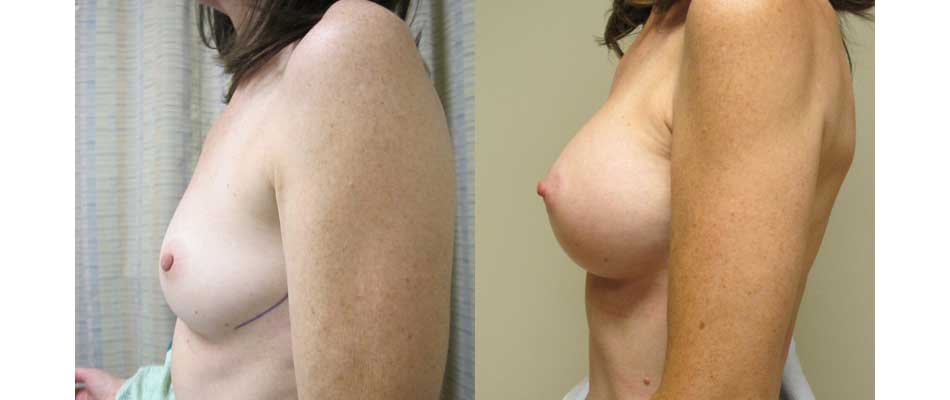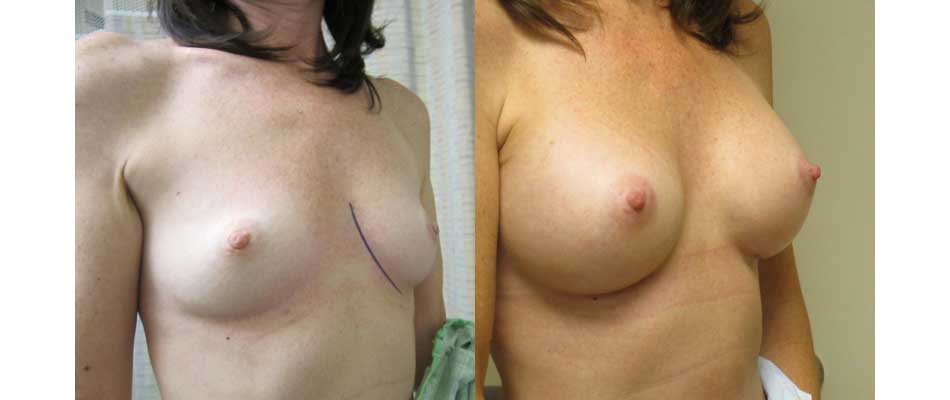Breast Augmentation (Implants)
What is breast augmentation?
Breast augmentation is a common cosmetic procedure to increase breast size, restore volume after pregnancy or weight loss, or to remodel the breast shape. It’s also called augmentation mammoplasty.
Breast size is increased using implants or fat transfer. Fat is taken from another place on the body for fat transfer. Implants can also be used for breast reconstruction after injury or mastectomy.
Breast augmentation can:
- Increase the projection and fullness
- Improve the balance between the hip and breasts
- Boost self-confidence
Breast augmentation can’t correct drooping breasts, but breast augmentation can be combined with a breast lift to correct sagging.
Good candidates for breast augmentation
Like any plastic surgery procedure, you should carefully consider the risks and benefits before scheduling breast augmentation. It’s also good to reflect on your reasons for wanting breast augmentation. While breast augmentation can boost self-confidence, having the surgery to please someone else might not. You’ll be happier with your results if you choose the procedure to make yourself happy.
Are you a good candidate for breast augmentation? You may be if you:
- Are physically healthy
- Are not pregnant or breastfeeding
- Have realistic expectations
- Have fully developed breasts
- Would like to change your breast size, shape, or volume
- Are concerned that your upper breasts seem flat
- Would like your breasts to be more symmetrical
- Have one or both breasts that did not develop normally
Breast Implant Types
There are several types of breast implants on the market today. Talk to your surgeon about the different types and which is best for you. Whichever type of implant you choose, it’s essential to monitor your implants for any changes for as long as you have them.
Saline implants
Saline implants give you a uniform shape, feel, and firmness. Saline (sterile saltwater) is harmless if it leaks but a leak will cause the implant to collapse.
They are FDA-approved for women 18 and older.
Structured saline implants
Like standard saline implants, structured saline implants are filled with sterile saltwater. Unlike standard implants, they are designed with an inner structure to make the implant feel more natural.
Silicone implants
Silicone implants are filled with silicone gel instead of saline. They may feel more natural but require more maintenance. Regular checkups may be needed to monitor the condition of the implants and ensure there are no leaks. Unlike saline, silicone gel will not be absorbed into the body if it leaks.
They are FDA-approved for women 22 and older.
Form-stable (gummy bear) implants
Form-stable implants are nicknamed “gummy bear” implants because of the way they hold their shape even if the shell of the implant breaks. The gel inside is much thicker than in silicone implants.
Form-stable implants have a tapered shape to mimic the look of a natural breast. Because of this, they could cause the breast to appear misshaped if they shift.
Round implants
Round implants give a fuller look than form-stable implants. They are less likely to look misshapen if they move.
Smooth implants
Smooth implants are softest and move more naturally than other implants. They may cause some rippling under the skin.
Textured implants
Textured implants trigger the growth of scar tissue that holds the implant in place.
Fat transfer
Fat transfer augmentation uses fat removed from another part of your body to enlarge your breasts. The fat is removed using liposuction and injected into your breasts. Fat transfer augmentation is best for small increases in breast size.
Breast Augmentation Procedure
Before surgery, you will need to stop smoking and stop taking certain medications that can cause or worsen bleeding.
- You may have general anesthesia or sedation.
- Your surgeon will make incisions in less-visible areas to hide the scarring.
- The implant will be placed in a “pocket” created under or over the pectoral muscle. The type of implant, size, and body type may influence the method used to insert and position the implants.
- After your implants are in place, your surgeon will close the incisions with sutures and adhesive or surgical tape.
- Your breasts will be wrapped in dressings or support garments to keep swelling down and support the tissue while your breasts are healing.
- You will rest in a recovery area until you are cleared to go home. Before leaving, your surgeon will talk to you about post-operative instructions and care.
When you go home, it is critical that you follow your surgeon’s post-operative instructions carefully for your safety and to achieve your best results.
Recovery
During the recovery period, it’s important to wear the support garments exactly as instructed. You may also need to clean the surgical site.
You’ll need to rest and avoid activity for a few days until the risk of bleeding has passed. Your surgeon will tell you when it’s safe to return to your normal activities.
You may have pain for several days and may have a prescription for pain medication. You should expect some swelling and soreness for several weeks.
You’ll achieve the best results when you follow your surgeon’s post-operative instructions carefully.
How much does a breast augmentation cost?
There is no single cost for all breast augmentation procedures. Your cost will depend on the doctor, type of implant, and your location. Most insurance companies won’t cover cosmetic surgery or related expenses.
Keep in mind that the cost of implants is only part of the overall cost of breast augmentation.
Other costs may include:
- Medical tests
- Surgeon’s fee
- Anesthesia fee
- Hospital costs
- Compression garments for after surgery
- Prescriptions
The cost of the procedure is an important factor, but it’s just as important to choose an experienced surgeon with proven results who you feel comfortable with.
Risks
Every surgery comes with some risks. Your surgeon will explain the risks at your consultation and will answer any questions you may have.
Complications are rare but may include:
- Bleeding
- Breast implant-associated anaplastic large cell lymphoma (BIA-ALCL)
- Changes in sensation
- Fluid buildup
- Hematoma
- Implant leak
- Implant rupture
- Incorrect positioning
- Infection
- Pain
- Poor scarring
- Reactions to anesthesia
- Tight scar tissue around the implant
- Wrinkling over the implant
FAQs
Will my implants last forever?
There’s no guarantee that they will. You may need additional surgery in the future to remove or replace them.
Will I be able to breastfeed after augmentation?
Yes. Implants can be positioned so they don’t interfere with breastfeeding. Be sure to talk to your doctor about your concerns.
Will I need to talk time off work for surgery?
That depends on your job. You will need to be careful to limit upper arm movement for 1-2 weeks and heavy lifting for 6 weeks.
Can I have an augmentation if I plan to get pregnant?
You can, but you should consider that changes to your breast during pregnancy may alter the appearance of augmented breasts.

“I recently had my breast augmentation with Dr. Madry and seriously could not be any happier with the results, he had listened to my concerns and answered all my questions, my results are unbelievable!! His nurse practitioner is an angel as well was amazing at my follow up! Thank you to Dr. Madry & his whole staff who put me at such ease and took care of me!!” – AAC
“I recently had my breast augmentation with Dr. Madry and seriously could not be any happier with the results, he had listened to my concerns and answered all my questions, my results are unbelievable!! His nurse practitioner is an angel as well was amazing at my follow up! Thank you to Dr. Madry & his whole staff who put me at such ease and took care of me!!” – AAC






























